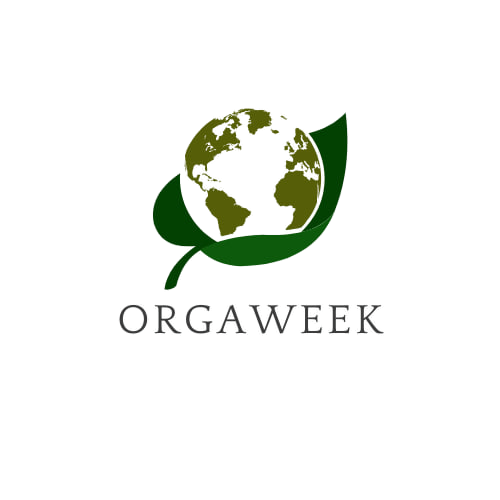Broadleaf Plantain (Plantago major)
- Wound-Healing Properties: Historically known as the “Band-Aid plant,” valued for its remarkable vulnerability (wound-healing) properties.
- Rich in Actives: Contains beneficial compounds including Aucubin, Mucilage, Tannins, and Flavonoids.
- Soothing & Anti-inflammatory: Highly effective in topical applications for skin irritations, wound care, and anti-inflammatory creams.
- Flavor Profile: Characterized by a wild, earthy, and grassy aroma and taste with a slightly astringent finish.
- Versatile Formats: Available as Dried Leaves (whole/cut), Leaf Powder, Herbal Extract, and Herbal Infusion (Tea).
Broadleaf Plantain (Plantago major): Nature’s Resilient Soothing Remedy
Broadleaf Plantain (Plantago major) is a resilient perennial herb from the Plantaginaceae family, often found in lawns and meadows worldwide. Often regarded as a simple weed, it is one of the most versatile and widely used medicinal herbs in folk traditions. Historically known as the “Band-Aid plant,” its fresh leaves were applied as a poultice to soothe wounds, insect bites, and stings, thanks to its remarkable vulnerability (wound-healing) properties.
The therapeutic effects of Plantain are owed to its rich composition of active compounds, including the iridoid glycoside Aucubin, soothing mucilage, astringent tannins, and flavonoids. It is celebrated for its powerful anti-inflammatory, antimicrobial, and demulcent actions. Internally, it is used as a tea to soothe coughs, digestive tract inflammation, and act as a diuretic.
At Organik, we carefully harvest Plantain from clean, unpolluted fields. The leaves are carefully dried to preserve their delicate active constituents, ensuring a high-quality product for the cosmetic, herbal supplement, and wellness industries. Our products undergo rigorous microbial testing, drying, and purity checks, and all exports comply with EU herbal safety regulations and international standards (ISO, organic certifications).
Packaging and Availability: We offer packaging for both industrial bulk and retail consumers. Bulk options include ∼15 kg PP Bags with food-grade liners for dried leaves/leaf powder and ∼25 L HDPE Drums for liquid extracts. Retail options include individually packed Herbal Tea Bags, ∼40 g or ∼80 g Eco-friendly Sachets (cut & sifted dried leaves), ∼50 g/100 g Jars (leaf powder), and convenient ∼30 ml/50 ml Plastic Dropper Bottles of Herbal Extracts.
Specifications Table
| Feature | Detail |
| Form | Dried Leaves (Whole/Cut), Leaf Powder, Herbal Extract, Herbal Infusion (Tea) |
| Aroma & Taste | Wild, Earthy, Grassy with a Slightly Astringent Finish |
| Applications | Topical Salves for Skin Irritations, Wound Care, Anti-inflammatory Creams, Soothing Syrups for Coughs, Digestive Teas |
| Shelf Life | 18−24 months (depending on storage) |
| Availability | Bulk & Retail |
| Storage Conditions | Store at 15−20∘C in a cool, dry, and airtight environment, protected from direct sunlight and moisture. |
| Export Status | Complies with EU herbal safety and international standards. Undergoes microbial testing and purity checks. |
Nutritional & Active Constituents per 100g:
| Component/Nutrient | Value |
| Active Compounds | Aucubin, Mucilage, Tannins, Flavonoids, Silicic Acid |
| Vitamin A | 15,000 IU |
| Vitamin C | 80 mg |
| Vitamin K | 450 mcg |
| Calcium | 1,500 mg |
| Zinc | 40 mg |
| Potassium | 900 mg |
Customer Reviews
Reviews
Clear filtersThere are no reviews yet.
Online Sports Nutrition and Natural Dietetics.
Chances are there wasn't collaboration, communication, and checkpoints, there wasn't a process agreed upon or specified with the granularity required. It's content strategy gone awry right from the start. Forswearing the use of Lorem Ipsum wouldn't have helped, won't help now. It's like saying you're a bad designer, use less bold text, don't use italics in every other paragraph. True enough, but that's not all that it takes to get things back on track.
The villagers are out there with a vengeance to get that Frankenstein
You made all the required mock ups for commissioned layout, got all the approvals, built a tested code base or had them built, you decided on a content management system, got a license for it or adapted:
- The toppings you may chose for that TV dinner pizza slice when you forgot to shop for foods, the paint you may slap on your face to impress the new boss is your business.
- But what about your daily bread? Design comps, layouts, wireframes—will your clients accept that you go about things the facile way?
- Authorities in our business will tell in no uncertain terms that Lorem Ipsum is that huge, huge no no to forswear forever.
- Not so fast, I'd say, there are some redeeming factors in favor of greeking text, as its use is merely the symptom of a worse problem to take into consideration.
- Websites in professional use templating systems.
- Commercial publishing platforms and content management systems ensure that you can show different text, different data using the same template.
- When it's about controlling hundreds of articles, product pages for web shops, or user profiles in social networks, all of them potentially with different sizes, formats, rules for differing elements things can break, designs agreed upon can have unintended consequences and look much different than expected.
This is quite a problem to solve, but just doing without greeking text won't fix it. Using test items of real content and data in designs will help, but there's no guarantee that every oddity will be found and corrected. Do you want to be sure? Then a prototype or beta site with real content published from the real CMS is needed—but you’re not going that far until you go through an initial design cycle.





Reviews
Clear filtersThere are no reviews yet.